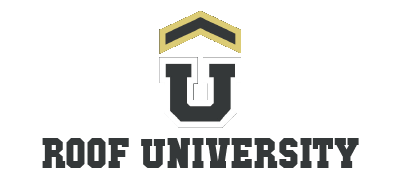Flat roofing systems are a common choice for commercial buildings, industrial structures, and modern-style homes. Unlike sloped roofs, flat roofs have a minimal incline, making them distinct in design and functionality. This guide explores flat roofing systems, their materials, advantages, challenges, and maintenance needs.
What is a Flat Roof?
A flat roof is a roofing structure with a slope of less than 10 degrees, appearing nearly horizontal to the naked eye. While flat roofs are not entirely flat, their slight slope allows water to drain away efficiently. This design makes them practical for certain applications, especially in urban areas or where space optimization is essential.
Common Flat Roofing Materials
- EPDM (Ethylene Propylene Diene Monomer):
- A durable, rubber-based material known for its flexibility and weather resistance.
- Suitable for various climates, including regions with extreme temperatures.
- TPO (Thermoplastic Polyolefin):
- A single-ply membrane that combines durability with energy efficiency.
- Reflects sunlight, reducing cooling costs in hot climates.
- PVC (Polyvinyl Chloride):
- A long-lasting and fire-resistant option.
- Commonly used for its ability to withstand chemicals and grease, making it ideal for restaurants and industrial buildings.
- Modified Bitumen:
- A multi-layered material combining asphalt and polymer, often reinforced with fiberglass or polyester.
- Offers enhanced durability and resistance to punctures.
- Built-Up Roofing (BUR):
- Consists of alternating layers of asphalt, felt, and gravel, creating a waterproof and heat-resistant barrier.
- Known for its traditional application and proven performance over time.
- Spray Polyurethane Foam (SPF):
- Applied as a liquid that expands into a seamless, waterproof foam layer.
- Ideal for complex roof designs due to its adaptability.
Advantages of Flat Roofing
- Space Utilization:
- Flat roofs can be used as functional spaces, such as rooftop gardens, patios, or HVAC equipment platforms.
- Cost-Effective:
- Installation and material costs are generally lower than those for sloped roofs.
- Ease of Access:
- Flat roofs are easier to walk on and maintain, simplifying inspections and repairs.
- Modern Aesthetics:
- Complement contemporary architectural designs with a sleek, minimalist appearance.
- Energy Efficiency:
- Many flat roofing materials are designed to reflect sunlight, reducing energy consumption in hot climates.
Challenges of Flat Roofing
- Water Drainage:
- Despite their slight slope, flat roofs are more prone to water pooling, which can lead to leaks and structural damage.
- Durability:
- Flat roofing systems may not last as long as sloped roofs and often require more frequent maintenance.
- Thermal Expansion:
- Constant exposure to sunlight can cause materials to expand and contract, potentially leading to cracks.
- Limited Insulation:
- Flat roofs may have less natural insulation than sloped roofs, requiring additional measures to maintain energy efficiency.
Maintenance Tips for Flat Roofs
- Regular Inspections:
- Check for cracks, blisters, or pooling water at least twice a year and after heavy storms.
- Clear Debris:
- Remove leaves, dirt, and debris that can block drainage systems or cause water retention.
- Monitor Seams and Flashing:
- Inspect the edges, seams, and flashing for signs of wear or separation.
- Apply Reflective Coatings:
- Extend the roof’s lifespan and improve energy efficiency with UV-resistant coatings.
- Address Issues Promptly:
- Repair leaks or damage as soon as they are detected to prevent further deterioration.
Applications of Flat Roofs
- Commercial Buildings:
- Ideal for warehouses, retail spaces, and office complexes due to their large, open layouts.
- Residential Homes:
- Often used in modern or minimalist designs, offering a unique architectural appeal.
- Green Roofs:
- Suitable for installations of rooftop gardens or solar panels.
- Industrial Facilities:
- Practical for large-scale operations requiring accessible and functional roof spaces.
Conclusion
Flat roofing systems provide a versatile and cost-effective solution for various building types. By understanding the materials, advantages, and challenges associated with flat roofs, property owners can make informed decisions and ensure their roofing system is well-maintained. Regular inspections and timely repairs are key to maximizing the lifespan and performance of flat roofs.
